Dye accidents happen quite often: from garment bleeding dye, messy child’s painting experiments, to accidentally sitting on wet paint on a public park bench. If you’re stuck with dye-stained clothes, do not throw them away. We know dye stains are stubborn, but do not despair yet. Follow the tips in this article, and you’re on your way to restoring your dye-stained clothes, learning some expert tips, and more.
The best way to remove dye stains from clothes is to pretreat them with commercial stain removers or homemade solutions like white vinegar. If you opt for vinegar, soak the stain in a ½ cup of white vinegar in four liters of cool water for 1 hour before washing normally.
Removing Dye Stains With Homemade Solutions
While dye stains are pesky, with some patience and tact, they are removable. This is done by using a variety of homemade solutions; rubbing alcohol, vinegar, and baking soda, among the others we will discuss below.
Removing Dye Stains With Vinegar
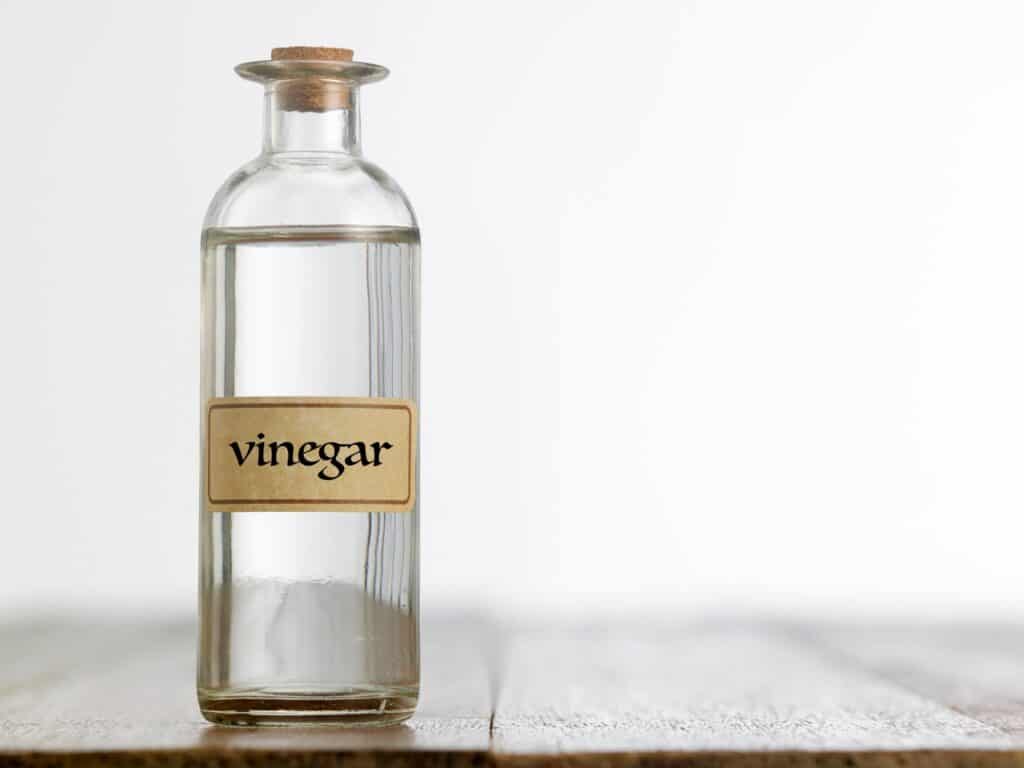
Vinegar is a popular acidic cleaning agent that can stamp out even the most stubborn stains. So when it comes to removing dye stains, it’s a handy solution for clearing the stain immediately.
As for safety, vinegar is among the safest to use, without any health risk to the user, unless swallowed. Vinegar is best used as a pretreatment solution for the stains before washing with the normal detergent.
To use this method, make a solution of ½ of white vinegar in four liters of water. Next, with a white piece of cloth, blot out the stain until it is removed. If it is not cleared, proceed to the next stage, which is to soak the garment with vinegar solution. To make a vinegar solution, add one cup of white vinegar to two gallons of water, and stir briskly before soaking the stained garment.
Subsequently, allow a minimum of 1 hour period, then launder with your usual dosage of laundry detergent in cool water, rinse and dry.
Rubbing Alcohol
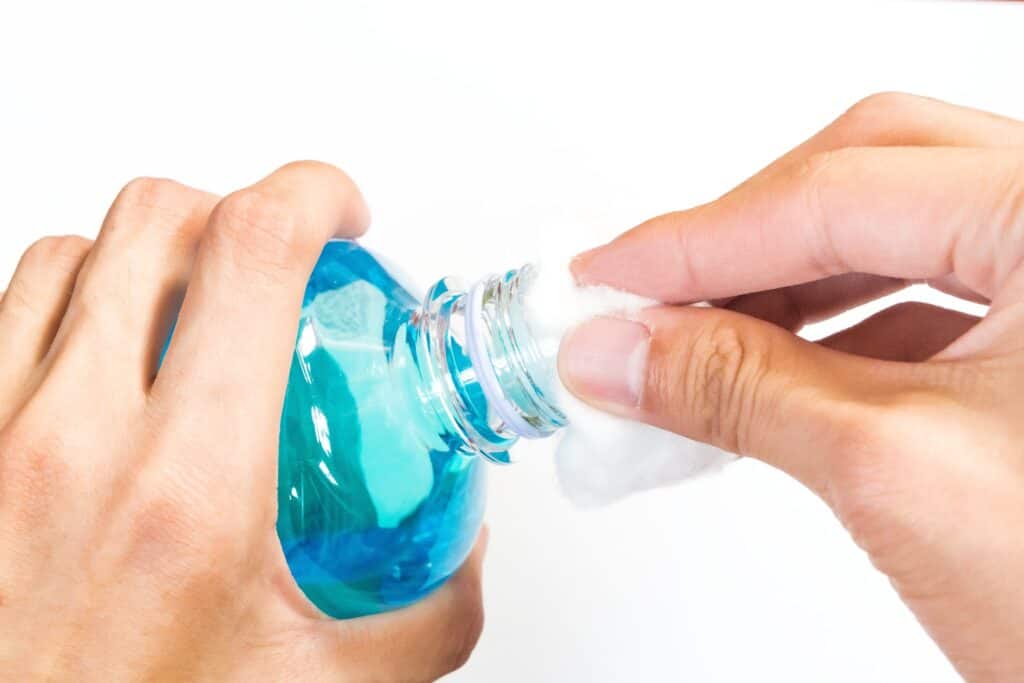
Rubbing alcohol has numerous medical and domestic uses. But do you know you can use it to remove dye stains? Rubbing is quite effective when it comes to dissolving dye stains. Not only that, but it removes the residue dye odor as well. Plus, the terrific thing with rubbing alcohol is it easily evaporates, leaving no trace of its use.
Now, before embarking on using rubbing alcohol, note it has a mild bleaching effect. So, you can either use it on whites only or colorfast clothes. If unsure, you can test on an inconspicuous part of the garment to avoid ruining the whole garment.
Having done the testing, place the garment on a flat surface, preferably on a tabletop. Next, place plastic or a cardboard piece below the stain but over the untainted part of the garment.
Then using a white piece of cloth soaked in rubbing alcohol, blot out the stain. Preferably, you can have several pieces of cloth. This is for replacing the saturated one as the dye continues to transfer to it.
Once one side of the garment is done, you can turn it inside out and work on this side too. When the stain is removed, rinse the spot with cold water, put it in a washing machine, and wash as usual.
Using Baking Soda
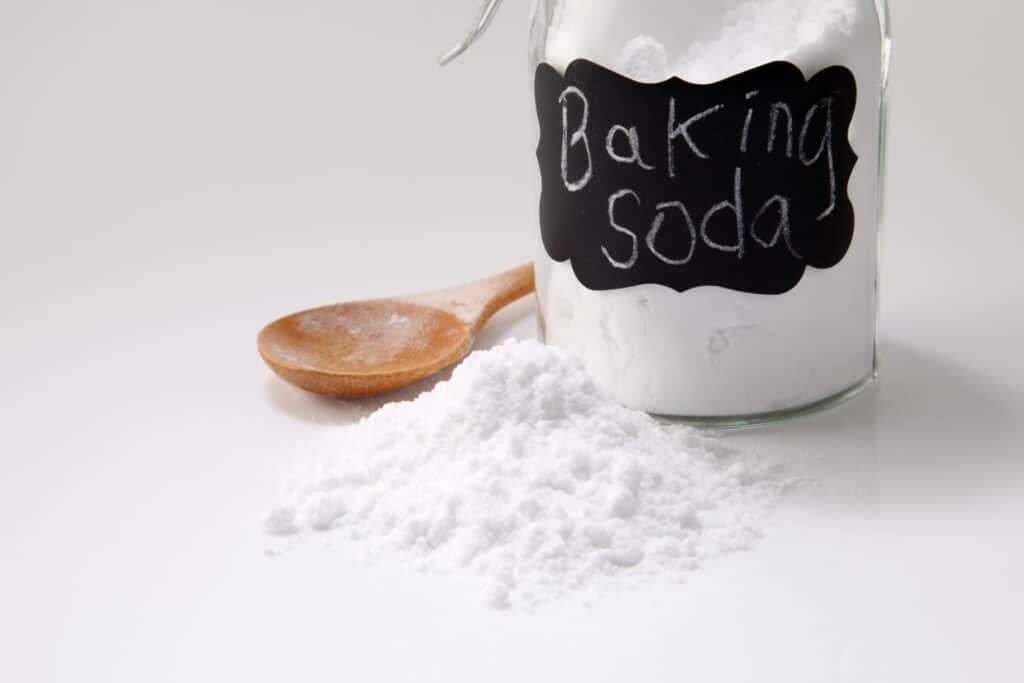
Baking soda is a convenient cleaning agent for removing a variety of stains and odors as well. Like other stain removers, be sure to pretreat the stains before washing. Before we proceed, follow the usual drill; check the compatibility of the fabric with the baking soda.
To start off, add one cup of baking soda to ½ a cup of warm water, and stir to make a thick paste. As for the thickness, feel free to adjust either of the ingredients to suit the type of fabric you are working on.
Different fabrics will require different levels of the thickness of the paste to permeate through. Then, soften the dye stain spot with water for easy application of the stain remover. Using fingers, apply the thick paste to the stain spot pressing firmly to enable the baking soda paste to sink into the garment fabric.
Having done that, allow the pretreated spot to sit for a minimum of two hours or until the spot is dry. If the stain spot is dry, you can use an old brush to scrub off the caked baking from the spot. Finally, rinse the stain spot under running water in a sink before laundering normally with your usual detergent.
Removing Dye Stains With Hydrogen Peroxide
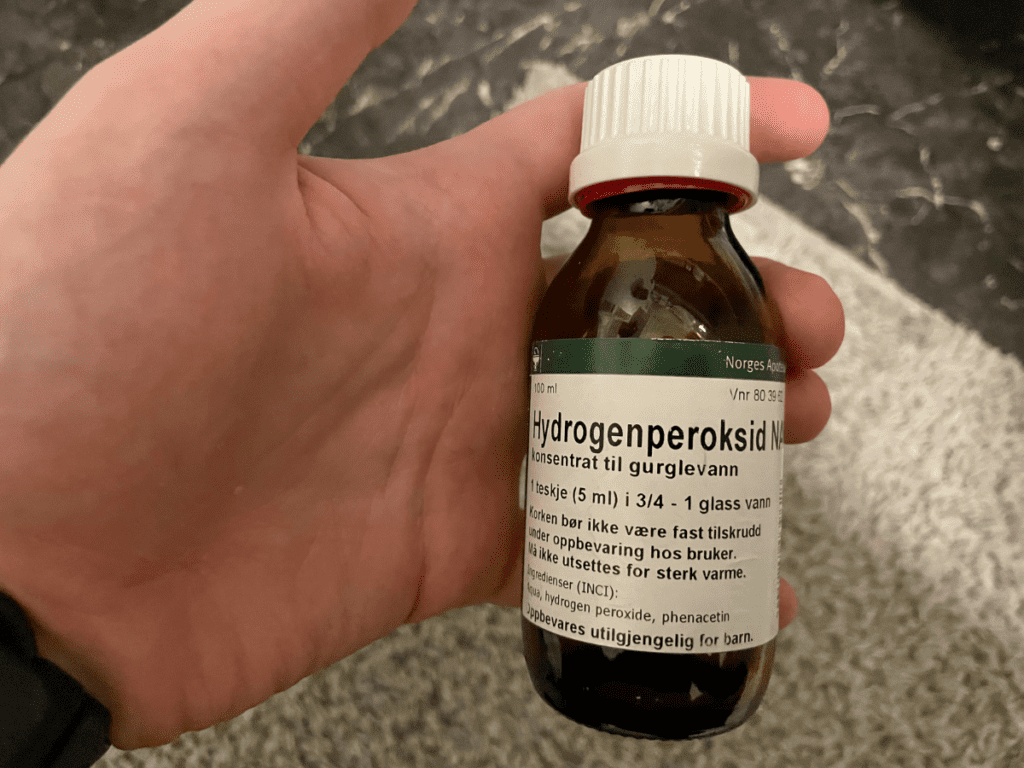
While hydrogen peroxide is popular for use in first aid, it dissolves even the toughest of stains, including dye stains. This is all courtesy of its mild bleaching effect, which enables it to dissolve the dye leaving a whiter and brighter garment.
Though a mild bleach, you need to be cautious by reading the garment washing instruction or spot test to avoid ruining your color clothes and delicates. To use this method, spread the garment on a flat surface to have a better view of the stain.
Then dip a cotton gauze or a white piece of cloth into the hydrogen peroxide to blot the stain. Do this repeatedly until the stain is removed. For better results, frequently replace the saturated blotting cloth as it gets saturated with the transferred stain dye. Afterward, soak the stain with cool water, load the washer normally, rinse and dry.
Clearing Dye Stains With Ammonia
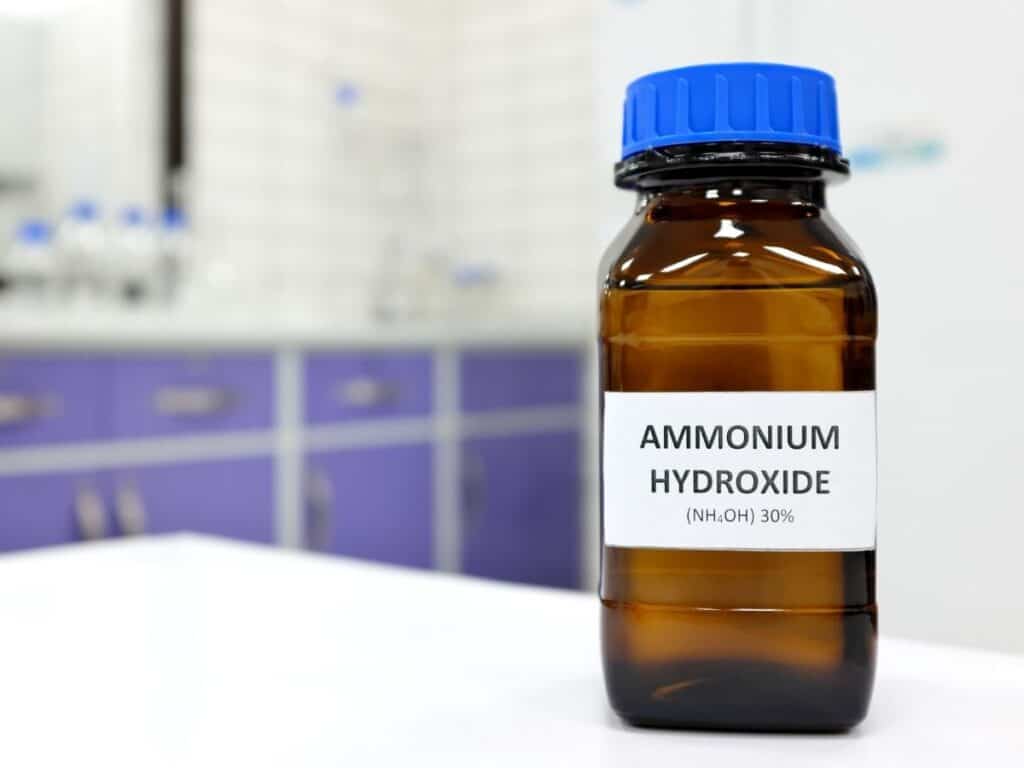
Ammonia is a great stain remover, making it easy to remove dye stains. Sure it smells awful, but do not worry as its smell does not long after the cleaning process.
One thing to note before proceeding further is to never mix ammonia with bleach in your washing. Mixing the two agents results in a chemical reaction resulting in toxic fumes.
To use ammonia as a dye stain remover, make ready a clean basin and pour in 1 liter of water. In it, put ¼ a cup of ammonia and stir well. Of course, if you want a larger amount of this solution, you increase the ammonia and water in the same ratio.
Then using this solution, soak the stained item making sure the stained part is completely submerged for at least an hour. Thereafter, rinse the stain in cool water before examining if the stain has been completely removed.
If not, you might want to repeat the process, but this time ensure you add one teaspoon of dishwashing soap directly to the stain. This will clear the stain residue. Finally, run a wash cycle with your favorite detergent, then rinse and dry.
Remove Dye Stains With Commercial Stain Removers
As we found above, homemade solutions are readily available and, therefore, convenient. However, even considering this, some people prefer commercial stain removers. And there are genuine reasons for that. For instance, they are more stain-specific in their formulation, making them more effective and safe to use.
Below are a few examples
Bleach
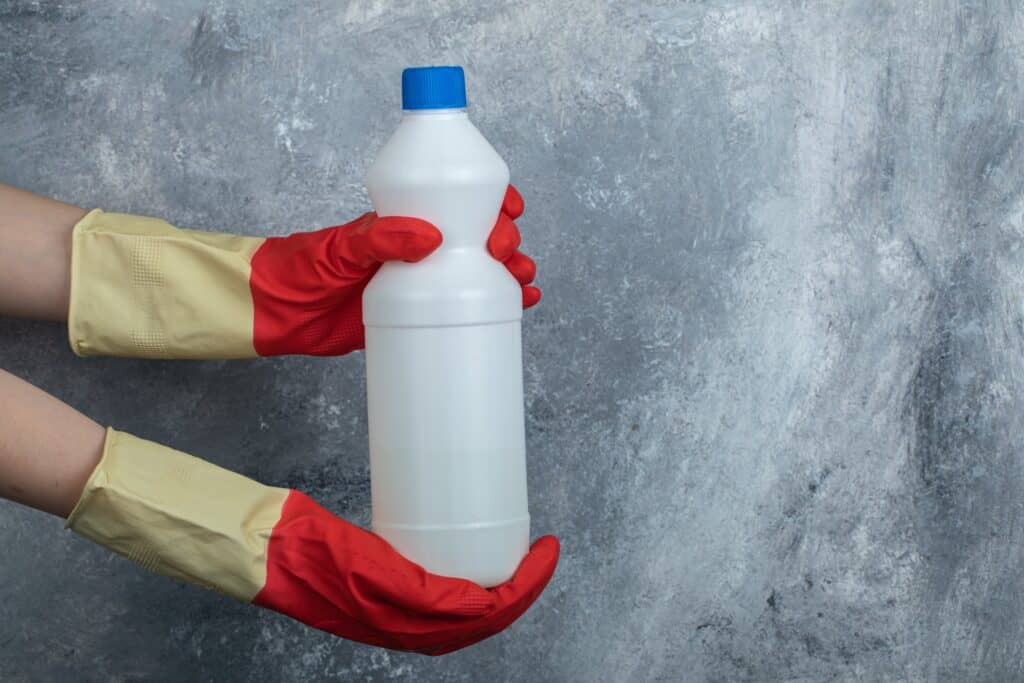
Bleach will remove all dye stains, but you need to be careful about how you go about it. For example, you should keep all colored clothes off chlorine bleach. Instead, use the oxygen bleach and preserve the chlorine bleach for the whites.
Unlike the milder oxygen bleach, chlorine bleach is harsher and has a bleaching effect on colors. Nonetheless, for either agent, avoid pouring directly on the fabric to prevent weakening the clothing fabric. Instead, dissolve the bleach in the water to make a solution.
To start off, add ¼ cup of oxygen bleach to 4 liters of water and stir briskly. If more solution is required, you can increase the oxygen bleach and water in the same ratio. You can then soak the stained garment for 30 minutes.
For both cleaning agents, avoid soaking the garment for much longer to reduce the risks of wearing out the garment fabric.
The next step is to wash the garment normally, but be sure to first thoroughly rinse the pretreated clothes before mixing them with others in the washer.
Alternatively, you can wash them separately to avoid bleaching the other clothes. Whichever is the option, add the required dosage for the standard detergents, wash, rinse and dry.
Branded Stain Removers

For commercial stain removers, the market is filled with great choices for removing dye stains. Popular dye stain removers include OxiClean maxi force and the Laundress stain solution. Most stain removers have specific instructions on how to use the product based on specific stain types. The reason is each stain remover contains a slight difference in the formulation and use conditions.
However, the general rule of these stain removers is to apply a few drops directly on the stain and wait for a minimum of 30 minutes, then wash normally.
Color-Run Dye Removers
These are stain removers specifically formulated for use on dye transfer from other clothes. Dye transfer mostly happens when you wash new dye-bleeding clothes. For example, some blue jeans bleed colors and may taint bright colored clothes when washed together. There are many commercial solutions for restoring color-run clothes. Examples include carbona color run remover and RIT Color remover.
The color run removers work in conjunction with your standard detergents. All you need to do is add its recommended dosage to your usual detergent requirements before laundering normally.
How to Prevent Dye Transfer
Tough stains on clothes can result from various sources; one of the main causes is dye transfer from other garments. With this in mind, you can take certain precautions to reduce the incidences from occurring.
Here are a few of them.
Sorting the Clothes Before Washing Is Key

It is best practice to always avoid including different types of clothes in the washing machine in the same wash. Various clothes types are made of different kinds of fabrics, which require different washing care.
Additionally, doing this before ascertaining if the clothes are colorfast or not is also risky. As a precaution, always wash white clothes, bright clothes, and dark clothes separately.
Read the Wash Instructions Labels
Reading the garment care labels is one of the surest ways of avoiding dye transfer. Most indicate whether the clothes might bleed dye or not. Be especially keen on commonly known suspect dye bleeders such as some types of denim.
Avoid Clothes That Might Bleed Dye
As you read the wash instructions label, also look for non-explicit signs of clothes being dye bleeders. When buying clothes, look closely for signs that the clothes might bleed color. Such signs include indications in the label such as:
- “Wash before wear.”
- “Use cold water.”
- “Turn inside out to launder.”
These are “hidden” signs of clothes likely to bleed dye. Again, some fabric types have a higher probability of leaking dye than others. For example, cotton clothes are more likely to bleed dye than synthetics such as nylon.
Unload Wash Immediately
Clothes overstaying in the washer is one of the causes of clothes bleeding dye. As the clothes sit in the washer, some of them with unstable dye may soften and come off into other clothes. The solution to this is to remove the clothes immediately after the washing cycle is done.
Frequently Asked Questions
How Do You Stop Colors From Bleeding
There are several methods of preventing color from bleeding. The most popular include adding 1 cup of vinegar or ½ cup of table salt in the rinse cycle. Also, you can use commercial color catcher sheets in the normal wash cycle.
How Can I Remove Hair Dye Stains From Clothes With Hairspray?
Using hair spray is one of the methods of removing hair dye from clothes. This is done by applying hair spray on a white piece of cloth and then using it to dab the stain. Blotting on the stain several times should clear it, after which you can launder normally.
How Can I Remove Color Stains From White Clothes?
One of the best ways to remove dye from white clothes is to soak them in white vinegar or bleach. Both are quite effective in removing any color stain residues due to their bleaching effects. Alternatively, you can use commercial dye stain removers such as carbona or RIT color remover.
Next, you can check out my complete guide to removing all makeup stains.

I’m an expert wardrobe organizer and a bit of a clean freak. I created this website and its YouTube channel to share practical guides about laundry and organizing. My teachings have been featured in multiple large news publications, and I’ve self-published two wardrobe organizing books and an entire course on the subject.
